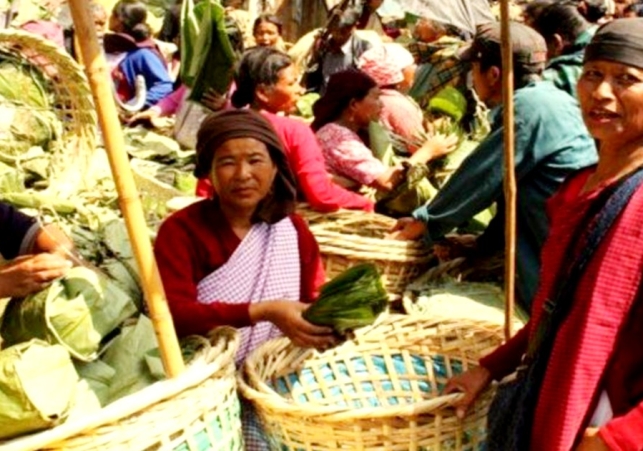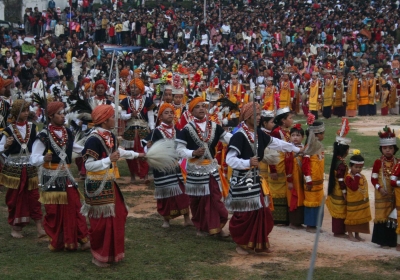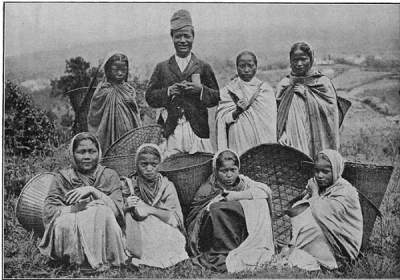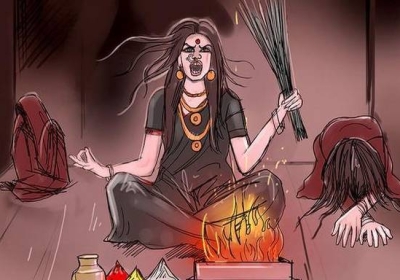Khasi Heritage: The Chaotic Market

The perceived freedom of every creature as an individual and as a community is expressed in various forms and the influence of one creature could be imitated by another in their respective manner and behaviour. In this regard, someone from among the animals desired to imitate human beings by trading in the market. Hence, the trading exposition was held at a vantage location, where every creature carried their wares to the designated market. The most attractive compartment is the gooseberry stall of the deer and the other chain of compartments are the ground nuts and honey stall of the bear, the banana stall of the monkey, the vegetable stall of squirrel, the ground root stall of porcupine and many other products by different animals. The carnivorous animals are held back from venturing any merchandise and certain other species do not have any viable products and the most dejected animal is the bitch. Surprisingly, the bitch noticed an abandoned sack on the pathway and scented a fragrance from it. It is the fermented bean sauce ‘Tungrymbai’ left by humans, which the bitch relished the flavour and decided to carry to the market. Every animal is inquisitive about the product brought by the bitch and when it is revealed, the odour is unbearable to other animals. Immediately, they protested and objected to the stinking condiment and the deer and stag were the first to trample upon the sauce. Thereafter, other animals also ridiculed the bitch and trampled on the sack of bean sauce, even the chief of the market, the tiger, was offended by the action of the bitch, when she complained. The commotion erupted in the trading activities and instantly discontinued, while it was termed as chaotic market or ‘Ïew Luri Lura’ in Khasi. The poor bitch was isolated from the domain of the animals, so she went to plead and seek solace with the canine family of wolves, jackals and foxes. However, none of them supported the dogs and the bitch was in severe anxiety. The bitch, along with other bitches and dogs, went to the human habitat and told everything about the incident with a pledge to serve the humans as faithful companions and assist in the hunting expedition. From that incident, the dogs posses the inherent aptitude to trail the footsteps of every animal and the people utilise their proficiency in hunting wild animals in the jungle. This is the universal truth that prevails all over the world. Further, the metaphoric interpretation of the tale is that all animals would usually converge at the serene shore of a stream to quench their thirst and immediately spread for their respective course when they sense danger. It is also a parable that animals should never be compared with the intelligence of human beings.
The dogs became domesticated animals along with other cattle, though they were confined to the courtyard and cats inside the rooms, while cattle were sheltered in the shed and grazed in the field. Since the humiliating experience at the ‘Ïew Luri Lura’, the dogs vow to avenge every wild animal and the stag is one prominent enemy because the deer was the first to trample upon the bean sauce, Tungrymbai. The stag is endemic to the plain land and occasionally climbs the hills for the aromatic herbs. Usually, deer and stags are fond of gooseberry, but one strange majestic stag was enchanted by the hills and mountain ridges of Khasi land and enticed by the fragrance of the Jangew Jathang, a delightful and edible piquant herb. The stag was too ambitious to venture into the soothing hill territory of Khasi land and set forth on his journey against the wishes and warning of his deer-mother. As he ascended the rocky boulders and disappeared into the jungle, the mother was apprehensive and anxious about his safety. When the stag reached the foothills of Shyllong peak, some shepherds noticed the strange animal and went to inform the villagers. The menfolk were curious about the strange animal and rushed to the spot armed with bows and arrows and by that time the stag had already savoured the piquant herbs. The stag was about to leave with contentment, when he suddenly heard the vociferous cries of people surrounding his succour zone. One of the menfolk sighted the stag hiding behind the large leaves of a Lapalang stem and hurled an arrow shot, but the stag leaped instantly at lightning speed and escaped. However, the dogs were rigorous in their chase of the stag, Sier Lapalang. The stag was christened Sier Lapalang because his unveiling sight was behind the Lapalang leaves, while the deer-mother watched furtively from a safe distance.
A stringent hunt is endeavoured by both the menfolk and their dogs, until they catch sight of the stag at a prominent target. The first arrow pierced through the heart and the stag fell on the ground, while the hunters raised their bows and quivers of arrows to rejoice the haul of fortune. The deer-mother was a silent spectator to the tragedy and left for the native home with lamentation and mourning over the death of her begotten son. The hunters carry the stag on a twig, as the dogs escort with glee, and on reaching out of the jungle, they construct a makeshift hearse and tie the stag on top while the menfolk carry it with a cry of triumph. As they marched to the village, folk dance and chanting of Phawar continued with jubilation, while the sorrowful deer-mother was tormented by the tragedy and recited the grieving elegy.
Ah... Reng sier kiba kynshyeng, thik la dei u Lapalang;
La khmat u khmied shaneng, sha ki lum kiba kynjang.
Tamsneng ia la ka kmie, um salia ba kan pangnud;
U prat lynti ban plie, ban ïoh mad ka ba angnud.
Ka kmie ïam pait dohnud, Horkit hordang te ba ka khang;
Lynter ka ïam ka ud, ba ka ieit l'u khun shynrang.
Mynsiem kaba laitluid, kaba ap ïa ka mynsaw;
Umsngiam na ki wahduid, ki kynbat te na poh khlaw.
Jangew te u jathang, ban ioh mad te tang shiwat;
Joit joit u thom naphang, dieng thynram ba u jynrat.
Tang poi shiteng ka riat, u khmih sha them sha ki pyntha;
Katta nang buid ki bniat, jangew jathang ba un ioh ktha.
Ryngkang te u rynsied, ba u dih ki um ba shngiam;
Klongsnam te ba u tied, u thylliej pat lah jylliam.
Kynsan ki briew ki lap, ha ranab u lum Shyllong;
U khnam mar shi ryngkap, їa u sier ki buh ka thong.
U sier u la khaweit, ba u rieh h'u lapalang;
Tang mar shu ia kynteit, sha lawbniap u jah hi jlang.
U thwet ha ban da lap, jangew jathang ban ioh bam hun;
U shah ka lyer u slap, tang їoh mad kaba u lmun.
Kyndit khlem poi pyrkhat, ka apot te ba ka ap;
Kyrthai ba u kynjat, ba ym don ba lah їarap.
'Sewbeh te ba ki kthong, kim ailad ba un phet rieh;
Rangbah te ba ki kdong, ki da wien la ki ryntieh.
La dung u nam sarang, na klongsnam te jong u sier;
Khyllem u Lapalang, ki mrad ki mreng baroh ki syier.
Ka kpong u khun bynriew, ha u sier lapalang;
Ha tyor ba ki kyntiew, ba kin ioh їa risa lang.







